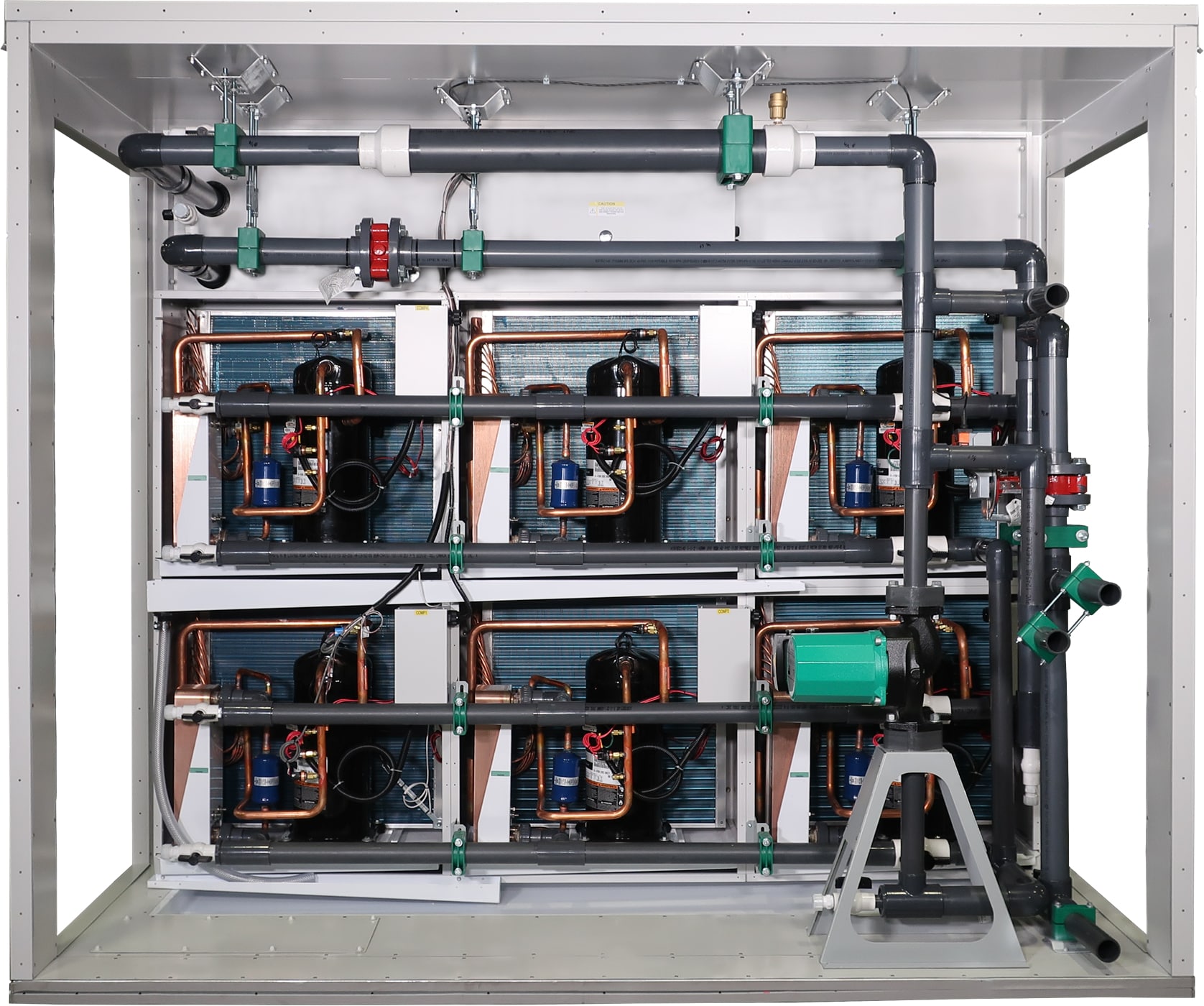Indoor pools provide a luxurious and comfortable environment for swimming, but they also present a unique challenge: excess humidity. High humidity levels in indoor pool areas can lead to discomfort, damage to the building structure, and health issues. This makes choosing the right indoor pool dehumidification system essential to any natatorium, residential pool, or aquatic facility.
Understanding the basics of indoor pool dehumidifier systems can make finding the right solution for your indoor pool much easier. Here’s a simplified overview of what makes indoor pool dehumidifiers work so you can be more informed throughout the process.
The Basics of Indoor Pool Dehumidifiers
Indoor pool dehumidifiers operate based on the principles of refrigeration and air exchange. The primary goal is to extract excess moisture from the air, ensuring a balanced and comfortable humidity level within the enclosed space. They accomplish this through several different processes that work together to maintain comfortable humidity levels.
Refrigeration Cycle
Most indoor pool dehumidification systems use a refrigeration cycle to remove moisture from the air. The refrigeration cycle is typically driven by a mechanical process that uses ventilation and compressors to move air. Compressor-based dehumidifiers have the highest output of any refrigeration system, making them the perfect solution for most indoor pool environments.
The process begins with the intake of warm and humid air from the pool area. This air passes through a set of evaporator coils inside the dehumidifier.
As the warm air comes into contact with the cold evaporator coils, the moisture in the air condenses into water droplets. This condensed water is collected in a drain pan or a separate reservoir within the dehumidifier. The now drier and cooler air is then reheated before being released back into the pool area.
This process on its own often isn’t enough to fully cover a pool’s dehumidification needs, which is why there’s another equally important part of the process to consider.
Air Exchange
In addition to the refrigeration cycle, indoor pool dehumidifiers incorporate an air exchange system. This involves bringing in fresh, outdoor air to dilute the indoor air and further reduce humidity levels. The dehumidifier constantly monitors the humidity and temperature levels, with air exchange rates controlled by the system or manually designated by users.
The combination of the refrigeration cycle and air exchange ensures that the indoor pool environment maintains a comfortable humidity level without compromising on air quality.
Other Systems That Help Indoor Pool Dehumidifiers Work Well
Indoor pool dehumidifiers often work in conjunction with other systems and equipment to ensure optimal performance and energy efficiency. Some key interactions include:
HVAC Systems: Dehumidifiers are integrated with heating, ventilation, and air conditioning (HVAC) systems to regulate both temperature and humidity levels. This collaboration ensures a balanced and controlled indoor environment.
Pool Covers and Enclosures: Using pool covers and enclosures can minimize water evaporation, reducing the load on the dehumidifier. Proper pool cover usage enhances the overall efficiency of humidity control systems.
Monitoring Systems: Dehumidifiers can be connected to various applications for centralized monitoring and control. Systems like Seresco’s WebSentry technology allow operators to adjust settings, receive alerts, and optimize the performance of the dehumidification system from anywhere.
Indoor pool dehumidifiers play a crucial role in maintaining a comfortable and safe environment for swimmers while protecting the building structure. If you’re looking for help with your indoor pool project, contact us to learn more about the innovative technology and energy efficiency that make Seresco Dehumidifiers the definitive choice in indoor pool dehumidification.
